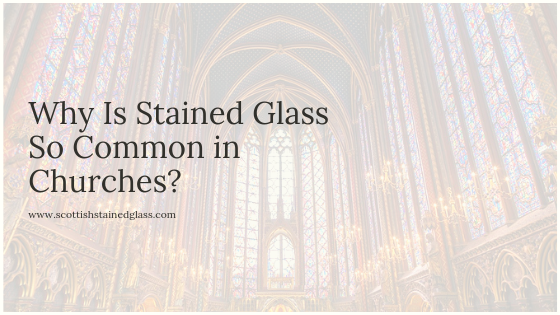
Many of us are amazed by the beauty of stained glass windows. When you walk into a church with colored glass windows, you can’t help but stop and stare. All of the colors and the magnificent rays of light shining through are quite a spectacle. But how did leaded glass windows come to be such a common part of churches? The answer may surprise you. Here’s a little bit of information about the history and meaning behind church stained glass.
People began making colored glass long before stained glass windows ever showed up on the scene. Historians believe that its creation can be attributed to the Egyptians and the Romans. Glass is made by heating up sand until it melts down into a liquid form. Artists found that in this molten state, they could use dyes extracted from plants and berries to add color to the clear glass liquid. Then they molded the malleable glass into whatever shape they wanted to create. At this time, colored glass was used primarily for creating jewelry and decorating pottery.
Light has always been an important symbol in religion. Light represents cleansing, purity, and life. It’s a commonly used element in Hinduism, Christianity, Catholicism, and Buddhist philosophy. For this reason, large, expansive windows were always an important part of churches. Before electricity, big windows helped illuminate church interiors.
Sometime during the 10th century, glaziers began using colored glass in lieu of clear glass to make windows. At first, this was done for purely aesthetic reasons. However, as the designs evolved and become more complex, stained glass windows took on a whole new role. Artists began adding in details using acrylic paint to create portraits and scenes from the Bible. Saints, symbols, and religious figures were common subjects of these paintings.
Churches soon found that they could use these images to “>explain stories from the Bible to members who could not read. The beautiful images also helped boost morale and uplift the spirits of people who were going through hard times. Many times, in older churches, windows depict the stories of the Bible in order, from Genesis to Revelations.
Back in Medieval times, it was not uncommon for the production of stained glass to last several years. As designs grew more elaborate, the amount of time to create all of the fine details increased. Cost was also a factor that contributed to delayed production. Many churches funded their projects entirely from donations. These took time to collect and accrue.
As congregations grew in size, churches had to renovate and expand their building. And new stained glass windows were added to the existing collection. For these reasons, stained glass windows were usually built one at a time, as funds were procured. For this reason, it is not uncommon to find stained glass windows in older churches that were created during entirely different centuries.
Stained and leaded glass windows continue to be a common feature in churches even today. Since most people today can read, we no longer need them for the same educational reasons, but their cultural importance still remains. Adding stained glass to a church is a way of honoring tradition and remembering history. And because they’re such a prominent feature, they help shape the identity of churches and give rise to their recognition within a community.
If you are interested in learning more about the history of church stained glass, we would be happy to chat with you. Our office can be reached directly by phone or email during business hours. We look forward to chatting with you soon.
© Scottish Stained Glass 2000- All Rights Reserved | A Part of Scottish Group Companies